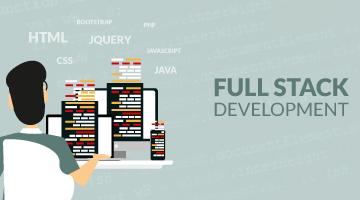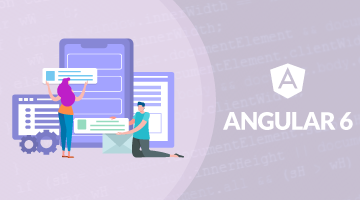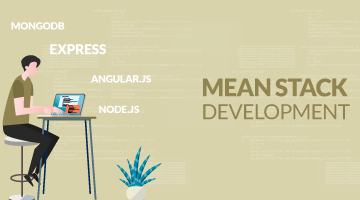
Beginning to know A-Z about Android
Kodelabs Android Development course specially designed for freshers and College students.
If you are looking for job in Android app development industry, Kodelabs brings right
platform for easy hands on Android SDK and building mobile apps.
As we know today Android has fully grown to become the biggest operating systems
for smartphones. Kodelabs Android programme will help you to take your development
skills to a next levels. Our Kodelabs programme conceptualization caters Android
fast growing basic concepts and rules in coding with
Eclipse, SQLite, Android Studio
skill set to grow right mobile app development horizon.
Also Android is most used mobile technology with approximately 82% of all mobile phones founded on android. Nowadays the 3 e's I.e e-commerce, education, entertainment have additionally changed into user friendly portable applications for clients everywhere. It increases demand of skillful Android app developers in the market to 40% with average package of 3.5 to 5 LPA in India.
Kodelabs programme make your Learn, Code, Develop the simple android app programming
with right LMS tools, Android Industry Experts, set of instructions and real
app assignment to furnish learning and Quizzes + Tests to analyze your skills.
Kodelabs helps you use the Android beautiful user interface with easy to develop
apps on this platform.
Kodelabs training will enables your coding skills to run faster with proper planning and creating Android apps smaller assignment that lands Freshers and Students to find the best position in this Android App Development culture.
What all things you will know with Kodelabs Android Programme before step by
step implementation starts:
“There are various category of Android applications available in market like Music, Books, Lifestyle, Entertainment, Education etc. and everyone think to develop bigger Android Apps like Whatsapp, Myntra, Paytm, Ola etc most popular applications. ”.
Free LMS subscription
With Kodelabs LMS, Students will receive accurate hands-on experience using
Course content and assignments weekly. We have genuine enterprise level Full
Stack Web Development problem statements to give hands on coding in development
labs. Every week LMS portal generates form of assignment for students and
submission in relevant time period is recommended. You feel the difference
in Development, Testing and Production environment and DevOps Software Cycles.
Regularly students can interact with the respective Instructors for course
specific problems and queries and regularly Instructors resolving the Full
Stack Web Development queries within 24 hours response time.
LMS provides weekly reports on the course modules completion and track the
status of assignments pending. Kodelabs provides you real-time mobile notifications
for announcements, leaves, courses missed and pending assignment and credits
earned.
On successful completion of Full Stack Web Development course, students
will receive a course completion Certificate from Kodelabs School of Java
Online plus Offline to publish in your CVs.
Learners and applicants should have some basic knowledge of Java and OOPs concepts can help.
SOFTWARES REQUIRED TO WORK IN THIS COURSE
Android Studio | SQLite
WHAT WILL YOU LEARN
- 1.Introduction to Android Development
- • Installing Android SDK and Android Studio
- • Key feature of Android 6.0 Marshmallow
- • Creating Android project
- • Simple App Demo to take input and say “ hello + name”
-
Topics Covered
- 2.Android Activity and Intents
- • Activity lifecycles
- • Intenst, Passing data, Launching activities
- • Supporting different devices, Adding action bar and Saving data
-
Topics Covered
- 3.Layouts and Controls
- • Android Layouts, Menu and Inputs controls
- • Setting, Dialog, Toasts and Drag & Drop
-
Topics Covered
- 5.Services
- • Bound service, Creating a bound services
- • Managing a lifecyle of bound service
- • Communication with remote service
-
Topics Covered
- 6: Content Providers
- • Content provider basics
- • Creating content providers, Calender provider and Contact provider
-
Topics Covered
- 7: UI and Fragments
- • Fragments, Dynamic UI with Fragments
- • Loader, Task and back stack
-
Topics Covered
- 8: Location and Sensors
- • Getting a current location
- • Using maps with location
- • Location strategies and Sensors Overview
- • Motion sensors and Position sensors
- • Environment sensors
-
Topics Covered
- 8: Location and Sensors
- • Getting a current location
- • Using maps with location
- • Location strategies and Sensors Overview
- • Motion sensors and Position sensors
- • Environment sensors
-
Topics Covered
- 8: Location and Sensors
- • Getting a current location
- • Using maps with location
- • Location strategies and Sensors Overview
- • Motion sensors and Position sensors
- • Environment sensors
-
Topics Covered
- 8: Location and Sensors
- • Getting a current location
- • Using maps with location
- • Location strategies and Sensors Overview
- • Motion sensors and Position sensors
- • Environment sensors
-
Topics Covered
- 9: Multimedia Audio and video & camera
- • Media playback and Media router
- • Media route provider and Camera
-
Topics Covered
- 11: Connecting Devices wirelessly
- • Android Wireless APIs and Network Service Discovery
- • Registering the Service and Discovering Services on Network
- • Resolving a Service on the Network and Unregistering a Service
- • P2P Connections with Wi-Fi and Wi-Fi P2P Connection Setup
- • Wi-Fi P2P for Service Discovery
-
Topics Covered
- 12: Network Operations
- • Connecting to the Network
- • Sending a Request and Receiving a Response
- • URL Connection and Managing Network Usage
- • XML Data and Parsing XML
-
Topics Covered
- 13: Battery Optimization
- • Optimizing Downloads
- • Optimizing Downloads—Prefetching Data
- • Minimizing Regular Server Updates
-
Topics Covered
- 14: Syncing with cloud/Server
- • Syncing with Cloud and Auto Backup in Android 6.0
- • Supporting Older Versions of Android
- • Sync Adapters and Sync Adapters—Components
- • Creating a Stub Authenticator
- • Creating a Stub Content Provider
- • Creating a Sync Adapter and Creating Sync Adapter Class
- • Create a Bound Service and Create Sync Adapter XML Metadata File
- • Declare Sync Adapter in Manifest
- • Adding the Account and Running the Sync Adapter
-
Topics Covered
- 15: Using Volley for Network Data interaction
- • Volley—Introduction and Getting Volley Library
- • Using Volley and Setting up a Network Queue
- • Standard Requests and Implementing Custom Request
-
Topics Covered
- 16: Building App for enterprise
- • Android for Work and Managed Profiles
- • Compatibility with Managed profiles
- • Testing Compatibility with Managed Profiles
- • Android for work—Application Restrictions
- • Implementing Externally Configurable Application Restrictions
- • Defining Application Restrictions
- • Reading Application Restrictions
- • Device Policy Controller
- • Creating a Managed Profile
-
Topics Covered
- 17: Google Play to distribute and monetize
- • Selling In-App Products and Preparing In-App Billing
- • Creating In-App Products and Query In-App Products
- • Purchasing In-App Product and Consuming In-App Purchased Product
- • Testing In-App Billing Application and Need for Multiple APKs
- • Maintaining Multiple APKs
-
Topics Covered
- 18: Best practices for User Interface
- • Adaptive UI Flows and Handling Screen Configuration
- • App Bar and App Bar—Implementation
- • Adding Actions and Action Bar—Up Navigation
- • Action Views, Action Providers and Snackbar
-
Topics Covered
- 19: Best practices for security & privacy
- • Security and Privacy—Overview
- • Storing Application Data in Files
- • Storing and Sharing Application Data
- • Using and Creating Permissions
- • Security Tips for Networking
- • Using HTTPS and SSL—Overview
- • Using HTTPS and SSL
- • Security with HTTPS and SSL
- • Android Dynamic Security Provider
-
Topics Covered
- 20: Best Practices for Testing
- • Test Project in Android Studio
- • Android Application Testing—Overview
- • Instrumentation—Overview
- • Test Case Classes and Assertion Classes and Mock Objects
- • Running Tests and Getting Results
- • Activity Testing and Espresso for UI Testing
-
Topics Covered
- 21: Best Practices for User Input
- • Detecting Common Gestures
- • Detect and Handle Touch Gestures
- • Tracking Movement and Handling Multi-Touch Gestures
- • Handling Drag or Scroll gesture
- • Scaling and Managing Events and Extending Touchable Area
- • Handling Keyboard Input
- • Handling Physical Keyboard Navigation
-
Topics Covered
- 22: Creating Wearable Apps
- • Android Wear Introduction
- • Android Wear User Interface principles
- • Android Wear Application design principles
- • Android Wear Application types
- • UI Patterns for Android Wear - Cards
- • UI Patterns for Android Wear - Pages
- • UI Patterns for Android Wear - Action Buttons
- • UI Patterns for Android Wear - Action Countdown and confirmation
- • UI Patterns for Android Wear -Action on Cards
- • UI Patterns for Android Wear - 2D Picker
- • Building Android Wear Application Packaging Wearable Apps
- • Wearable SDK limitations
-
Topics Covered
- 23: Custom UI for Wearables
- • Defining Layouts
- • Defining Layouts using WatchViewStub element
- • Accessing Layout Views in WatchViewStub element
- • Using Shape-aware layout and Adding Cards
- • Creating Lists and Creating a 2D Picker
- • Showing Confirmations and Showing Confirmation timer
- • Showing Confirmation animation and Exiting full screen apps
-
Topics Covered
- 24: Adding wearable features
- • Adding Wearable Features to Notifications
- • Creating Notifications for Wearables
- • Adding Buttons to Notifications
- • Adding Big View to Notification
- • Adding Wearable Features
- • Receiving Voice Input in Notifications
- • Receiving Voice Input as a String
- • Adding Pages to the Notification
- • Grouping Notifications
-
Topics Covered
- 25: Data Synching
- • Accessing Wearable Data Layer
- • Syncing Data Items and Transferring Assets
- • Sending and Receiving Messages
- • Handling Data Layer Events
-
Topics Covered
- 26: Creating Watch Faces
- • Designing Watch Faces
- • Watch Face Design Considerations
- • Building a Watch Face Service
- • Drawing Watch Faces and Showing Information in Faces
- • Creating Interactive Watch Faces
- • Providing Configuration Options
- • Handling Miscellaneous Issue and
- • Optimizing Performance
-
Topics Covered
Register for the course Now
Trainer’s Name
Rajiv Mishra
Course Fee
INR 12,500
Available Seats
20
Schedule
Weekend 11.00 am:2.00 pm
Difficulty Level
Beginner
Course Duration
6 Weeks
Prerequisites
Basic OOPs & Java
Thousands of students are graduated and joined the Top MNCs. Why not you?
Related Courses
Kodelabs LMS provides the proper modern environment for a streamlined and integrated learning experience. Few of our best result driven courses are:

Full Stack Programming
20 Reviews
Full Stack course converts IT development knowledge into understanding of creating a fantastic website with Front End and Back End
Learn More
Angular & Bootstrap
25 Reviews
Learn Introductory level OOPs programming and basics of how to build a modern, complex, single page and scalable web applications
Learn More
MEAN Stack
35 Reviews
MEAN knowledge provides you the opportunity to start your career as a full stack web developer in a next gen corporates
Learn More
Benefits You Will Earn
Tap for Android training Certification course to ensure success while opening doors into IT and MNCs companies.
CERTIFICATION TO HELP
Kodelabs sponsored Android training certificate of participation would be issued on successful completion of the course at School of Java
Kodelabs will provide complete assistance in qualifying Google Associate Android Developer Certificate
Note*: Complete course attended is mandatory to get the certificate.
FEATURES WE COVER